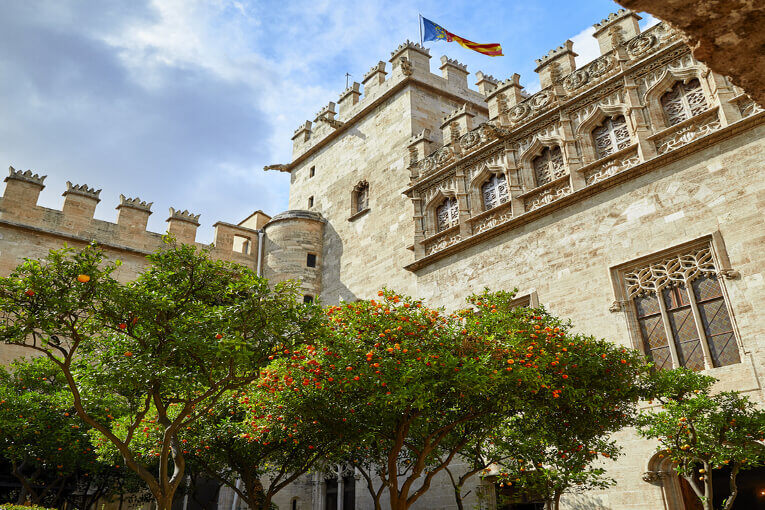If you have walked around Valencia, you will surely have been surprised by the large number of orange trees in the streets.
It is almost impossible not to notice them: they are bright green all year round, they have an intoxicating scent in spring thanks to the orange blossom, and they are loaded with oranges in winter.
But of course, the big question is... why are they there and what do we do with those oranges?
Let's get this straight!
A symbol of Valencia... but not for dessert
An orange tree is much more than a tree for Valencia, it is a symbol of the city. And no wonder because oranges are practically a religion here.
But be careful, don't get confused: the orange trees that decorate our streets are not the same ones that produce those sweet oranges you find in the markets.
They are not good to eat. They are bitter, too acidic and have a harder texture than table oranges. So why do we plant so many?
More than a tree, an urban strategy
This is the key. The bitter orange trees are not in Valencia for people to eat the fruit, but because they are perfect for the city.
They are very durable, require little maintenance and also improve air quality.
Their leafy canopy provides shade in summer, their orange blossom fills the streets with an unmistakable perfume in spring, and in winter, their oranges bring a touch of colour that brightens up the urban landscape. All advantages.
That is why Valencia has no less than 8,819 ornamental orange trees in its streets and squares.
But of course, this brings us to another big question: what about all those oranges?
The big orange collection: from the streets to compost
Every year, the workers at the Parks and Gardens face a mammoth task: the collection of between 400,000 and 460,000 kilos of oranges.
To do so, a special collection scheme is set up from December to March. It is carried out with a curious vibration system that makes it easy for the oranges to fall and remove them.
And what happens to them? They are taken to waste treatment plants to be turned into compost, which is then reused in local agriculture.
So, these fruits that nobody will be able to eat end up going back into the soil in the form of fertiliser. A closed and sustainable circle.
Valencia: a green city par excellence
The abundance of orange trees is only part of Valencia's commitment to urban greenery.
Named European Green Capital 2024, the city has been recognised as a Tree City of the World, an award given by the FAO and the Arbor Day Foundation to cities that excel in the management of their trees and green spaces.
And no wonder, because in addition to orange trees, Valencia has thousands of urban trees that contribute to improving the quality of life.
From Turia Garden or the Botanical Garden, to the neighbourhood parks, greenery is an essential part of the city's identity.
So, feel proud if you see orange trees in the streets of Valencia: they embellish the city, improve the air and, in their last cycle, become compost to continue nourishing the soil.


